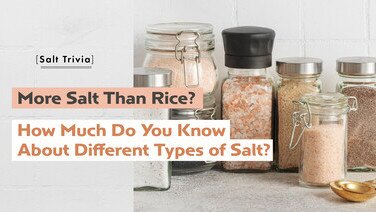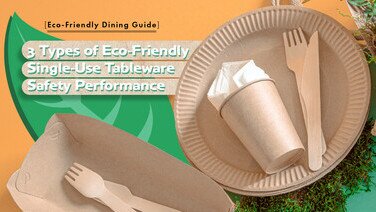Dogs, just like humans, need different types of nutrients to maintain good health. For older dogs that don't like to drink water, “canned pet food” (wet food) may be more suitable for them. So, what nutrients should pet owners look for when choosing canned pet food? Let's read on and learn some tips!
The first step is to choose a complete pet food or a complementary pet food with consideration of the eating habits of your pets. What is the difference between the two?
Canned complete pet food vs canned complementary pet food? Need to understand the difference in their nutritional value
Canned complete pet food | Refers to complete pet food that comes in cans and is marked with “complete and balanced”. These products should contain all the essential nutrients that a dog needs on a daily basis. They can be fed as the dog’s sole diet and can satisfy its daily energy and nutritional needs.
|
Canned complementary pet food | Refers to complementary pet food that comes in cans, which should be fed in combination with other complete pet food (dry or wet food) to provide complete and adequate nutrients for dogs. Dogs should not be fed solely with canned complementary pet food for a prolonged period. |
Step 2 is to check the nutritional content of the canned pet food. Dogs of different life stages, sizes and physical condition may have different nutritional needs. When purchasing, pet owners may consider the following 6 nutrients and their pet dogs’ needs.
Find out more about these 7 major nutrients
1. Crude Protein
Protein has important functions such as maintaining the immune system and hormones, etc. According to the recommendation of The American Feed Control Association (AAFCO), the minimum concentration of crude protein in complete pet food for adult dogs (in maintenance phase) is 18% (on a dry matter basis), and that for dogs in growth or reproduction stage is 22.5%. Pet owners should choose products according to the life stage and physical condition of their pet dogs.
In addition to considering the percentage of crude protein in dry matter, pet owners should also pay attention to the main source of protein. When choosing canned pet food, it is better to choose products that specify the types of meat used (e.g. chicken, beef, lamb) and their origins, and list meat as the top ingredient in the ingredient list. On the contrary, avoid products with vague labels and claims of containing meat by-products, poultry by-products, and animal fat, etc. as their main ingredients.
2. Crude Fat
Many people may have an innate fear of fat. However, a well-balanced and nutritionally complete pet food must contain an appropriate amount of crude fat to provide energy (calories) and help absorb fat-soluble vitamins (including vitamin A, D, E and K). Crude fat also provides dogs with essential fatty acids to maintain healthy skin and hair coat.
Attention! What types of dogs need more fat? And which ones need to avoid high fat content?
- Fat is very important for active and large dogs! Working dogs have higher caloric needs, such as shepherds and sled dogs; so pet food with higher crude fat content caters better to their needs. If the dog's hair coat lacks lustre, the condition of the coat can also be improved by feeding it with a diet high in crude fat content, so that it can obtain the necessary fatty acids and fat-soluble vitamins.
- If the dog is obese or overweight, the pet owner should pay special attention to the crude fat content and calories of the pet food. When choosing a complete pet food, it is recommended to choose a product with a lower crude fat content, while at the same time meeting the minimum fat content recommended by pet food organisations (minimum 5.5% of dry matter). In general, dogs that are inactive, obese, old, or suffering from gastroenteritis or pancreatitis should avoid consuming high-fat pet food.
3. Crude Ash and Minerals
Crude ash refers to the substance that is left over after the food is completely burned, which can roughly reflect the total amount of minerals (e.g. calcium, phosphorus, zinc, iron, etc.) in pet food, and most of the crude ash in pet food is derived from bone-in ingredients and mineral additives.
Let’s find out the importance of minerals for dogs’ health
Minerals | Functions | Effects with Deficient Intake | Effects with Excessive Intake |
Calcium | Forms bones and teeth; helps in blood coagulation; assists in nerve impulse transmission and muscle contractions. | May lead to hyperthyroidism, reduction in bone mineral content, and bone deformities. | Puppies of large dog breeds may suffer aberration. |
Phosphorous | Forms bones; helps in energy metabolism and acid-base balance. | Puppies may suffer slower weight gain, loss of appetite, and bowed front legs. | – |
Potassium | Helps in acid-base balance and nerve impulse transmission. | May obstruct puppies’ growth and development; may cause weakness in neck and hind legs’ muscles. | – |
Sodium | Helps in acid-base balance, and the production and transmission of nerve impulse. | May lead to fast heart rate, higher water intake and haemoglobin concentration, and dry mucous membranes. | – |
Magnesium | Helps in the proper functioning of enzymes, and the production and functioning of hormones; is also a component of bones and teeth. | Puppies may have slower weight gain, muscle spasms, carpal hypertension and possible hind leg paralysis. | – |
Iron | Is essential for blood production; helps maintain energy metabolism. | May obstruct puppies’ growth and development, cause pale mucous lining, lethargy, and overall weakness or fatigue. | In acute cases, may harm stomach and other tissues. |
Copper | Forms connective tissues and blood cells; produces melanin; have antioxidant properties. | May cause anaemia, and loss of hair pigment in puppies. | – |
Manganese | Maintains the proper functioning of enzymes; helps bone development; maintains homeostasis in the nervous system. | No relevant research information. | – |
Zinc | Maintains the proper functioning of enzymes; helps cell replication, wound healing, and the digestion and metabolism of protein and carbohydrates. | May cause vomiting and skin damages. | – |
Iodine | Builds thyroid hormones; helps in the growth and development of puppies; regulates the metabolic rate. | May lead to goiters, dry and sparse hair coat and weight gain. | May lead to increased tearing, salivating and respiratory secretion, as well as flakey skin. |
Insufficient or excessive mineral intakes may affect pets’ health
Prolonged excessive copper intake may affect the absorption and utilisation of zinc and iron. On the contrary, insufficient copper intake may lead to microcytic hypochromic anemia in dogs, and may affect their hair coat and cause a change in hair colour.
Excessive intake of zinc is also not recommended as it may interfere with the absorption of other minerals (e.g. iron and copper). On the other hand, zinc deficiency may lead to hair loss and affect dogs’ immune system.
In addition, when choosing a diet for a senior dog, special attention should be paid to the content of zinc, copper and iodine. It is recommended to choose a complete pet food that meets the relevant recommended levels of these micronutrients.
4. Carbohydrate
In general, carbohydrates in pet food include sugar, starch and dietary fibre, and are important sources of energy. Pet owners can roughly calculate the carbohydrate content of different wet foods based on the nutrient information on food labels and the following formula:
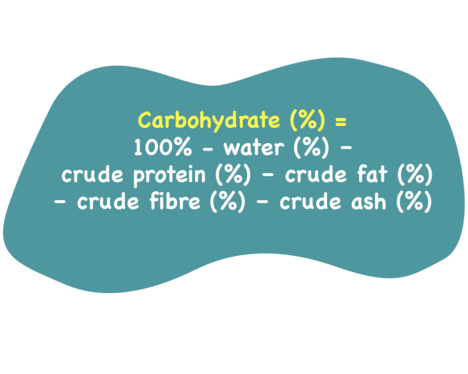
The Consumer Council has noticed that some pet food products which claim to be “grain-free” may have starch-containing ingredients such as tapioca starch, potatoes, pumpkins, and peas, etc. Choosing products based only on related claims such as “grain-free” will not help avoid pet food that contains starch or carbohydrates.
5. Vitamin D
Dogs mainly obtain vitamin D through their daily diet, which helps maintain the balance of calcium and phosphorus in their bodies. An insufficient intake of vitamin D may affect the bone health of dogs in the long run. It may lead to rickets in dogs, causing bones to swell and bend. It may also affect the bone growth of puppies, and increase the risks of osteoporosis and dental problems in adult dogs.
On the contrary, excessive intake of vitamin D may also lead to serious complications, including kidney failure and even death. There had been overseas incidents where pets’ deaths might be linked to excessive intake of vitamin D.
However, some pet food products do not list the vitamin D content in their food labels, consumers may refer to the article “Attention Pet Owners! A Survey on Canned Dog Food Comparison on Vitamins and Minerals”(Chinese version only) in Issue #534 of CHOICE Magazine. In this article you may find the test results on 20 models of wet food for dogs, including the content of macronutrients and micronutrients, as well as harmful substances.
6. Essential Amino Acids
Dogs cannot produce all the essential amino acids that they need. Therefore, they must get sufficient essential amino acids through their daily diet. Insufficient intake may lead to diseases. The Council has previously tested 20 models of wet food for dogs, and 16 models met the minimum concentration levels recommended by the AAFCO and FEDIAF.
7. Crude Fibre
Fibre helps keep dogs’ gut healthy, stimulates the production of good bacteria in the gut, and aids in bowel movements. Meals for senior dogs, in particular, should contain appropriate amounts of fibre to maintain healthy bowel movements. However, the AAFCO and FEDIAF currently do not have recommendations on minimum fibre concentration for pet food.
Healthy eating tips for dogs
Canned complementary pet food cannot be fed as main diet!
As suggested by its name, canned complementary pet food does not have sufficient nutrients as compared to complete pet food. For example, the contents of calcium and phosphorus in some products are lower than the recommended levels. Therefore, pet owners should not feed their dogs with complementary pet food as their sole diet, but they should be fed in combination with other complete pet food to provide complete and adequate nutrients.
Feeding a nutritionally unbalanced diet (e.g. too low or too high in certain nutrients) or a diet with unbalanced mineral content over a long period of time may negatively affect the health of dogs. Also, feeding with the same brand or model of canned food for a prolonged period may also lead to imbalanced nutrition. Therefore, pet owners should avoid feeding their dogs with pet food of the same brand and model for too long.
What is the ideal size?
Many pet owners may think that a slightly chubby dog looks cute. However, dogs are just like humans, as such maintaining an ideal weight is very important to prevent diseases. Being obese or overweight may increase the risks of heart disease, arthritis and diabetes, and may even shorten their lifespan.
The ideal size for a dog is one that its ribs can be easily palpable; with a small layer of fat covering them, and a visible waist when viewed from above. Dogs that are obese or overweight should lose weight gradually and moderately.
By now, we hope pet owners have a good idea of what kind of pet food their pets need to keep them healthy. Let's take a look at the article “Attention Pet Owners! A Survey on Canned Dog Food Comparison on Vitamins and Minerals” (Chinese version only) in Issue #534 of CHOICE Magazine. In this article you may find the test results on 20 models of wet food for dogs.
Further reading:
“Choose Smartly! You Can Give the Best to Your Pets” (Chinese version only)


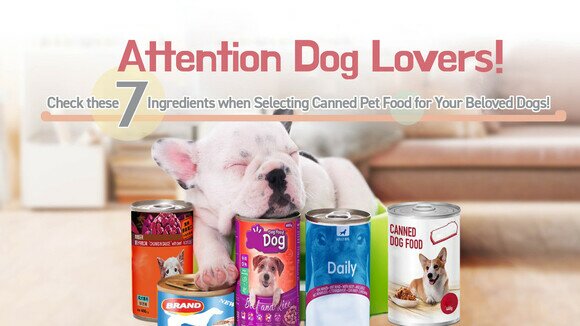


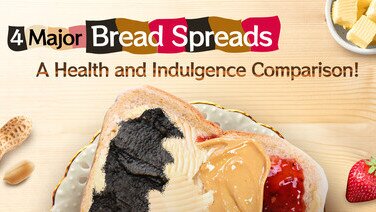
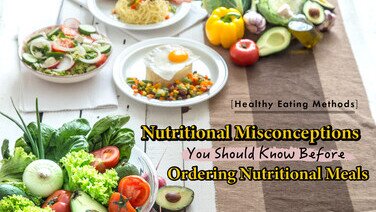

![[Baby Snacks Guide] Who Says Snacks Can’t Be Healthy?](/f/guide_detail/415742/376c212/bb%20snack.jpg)
